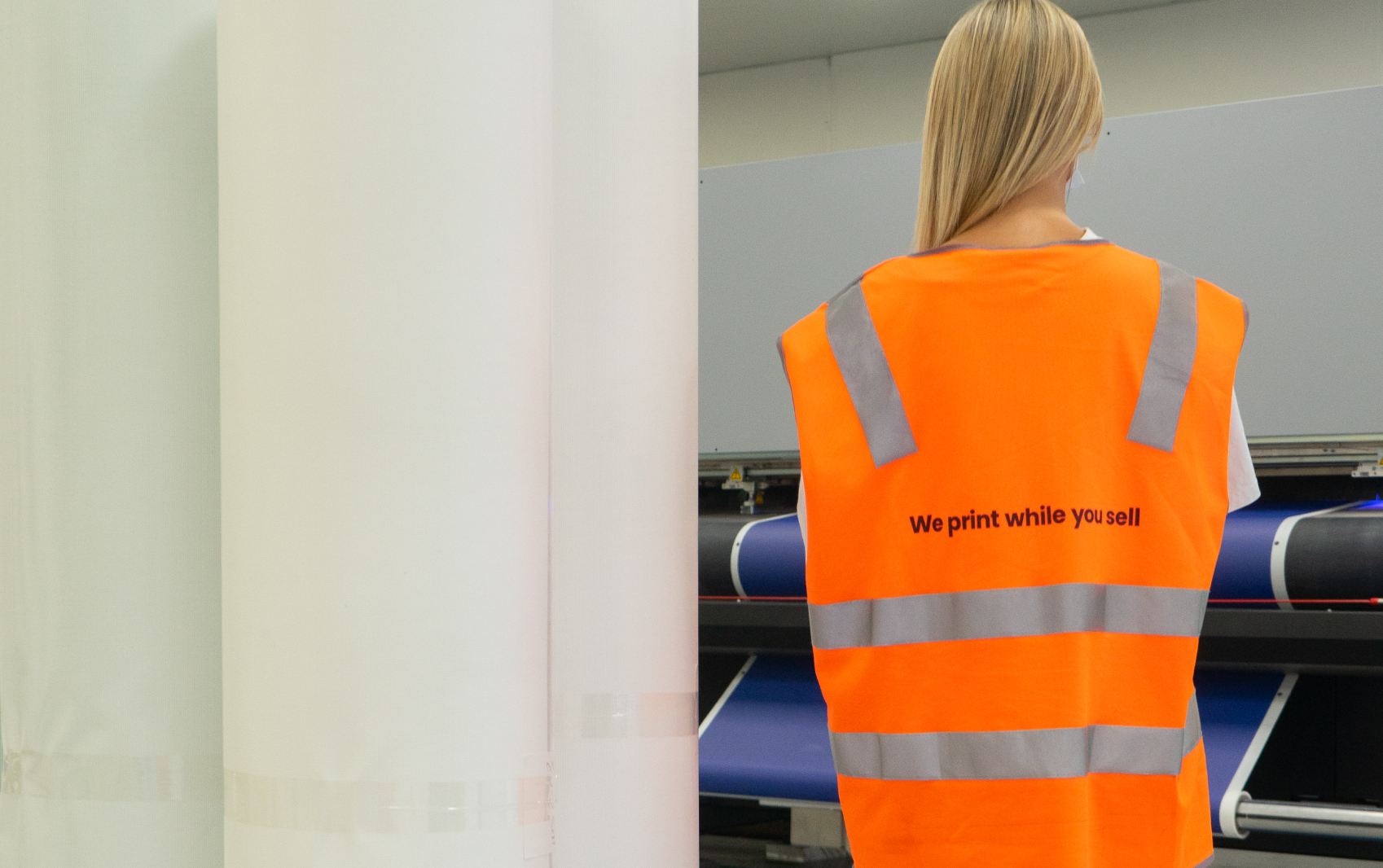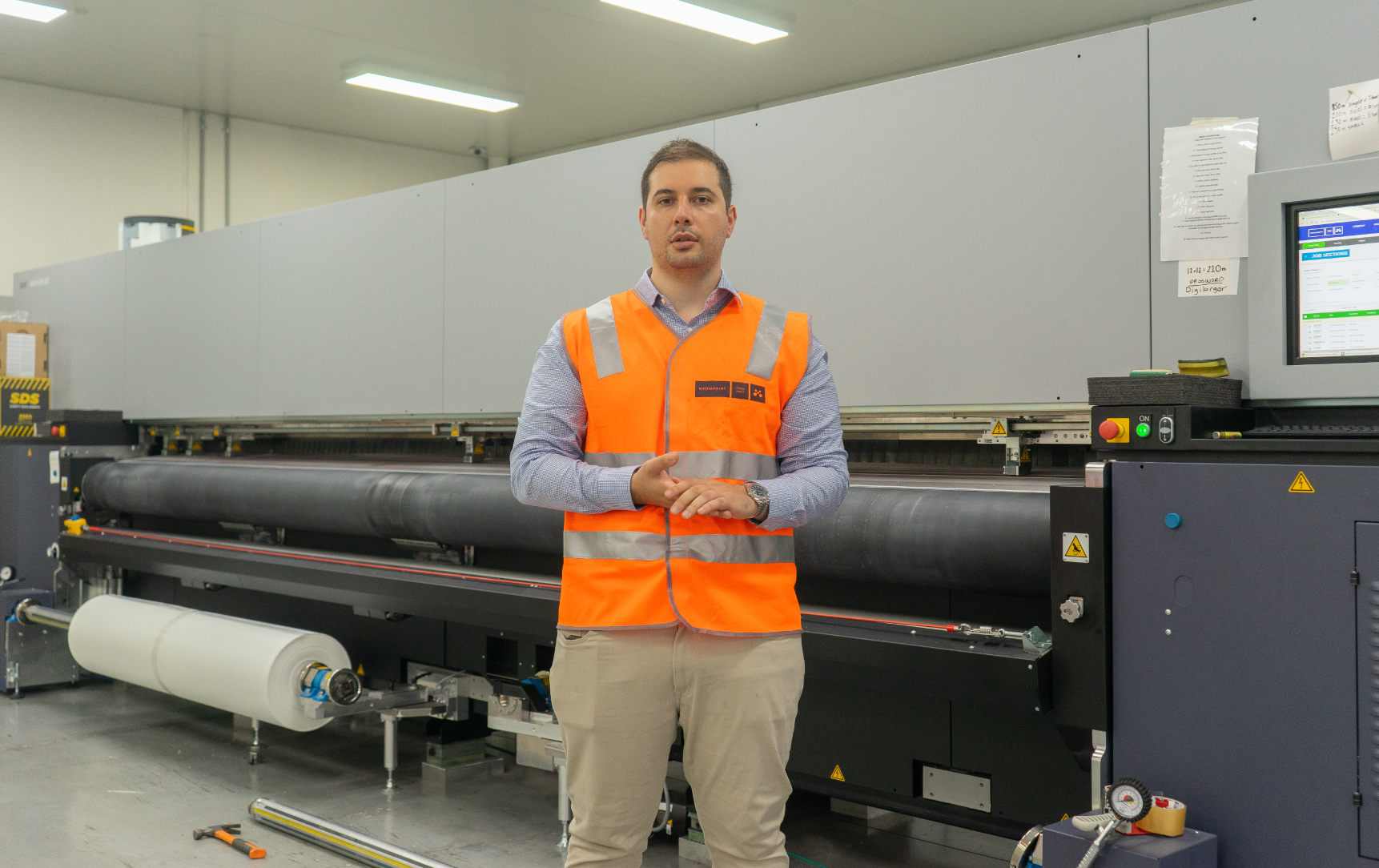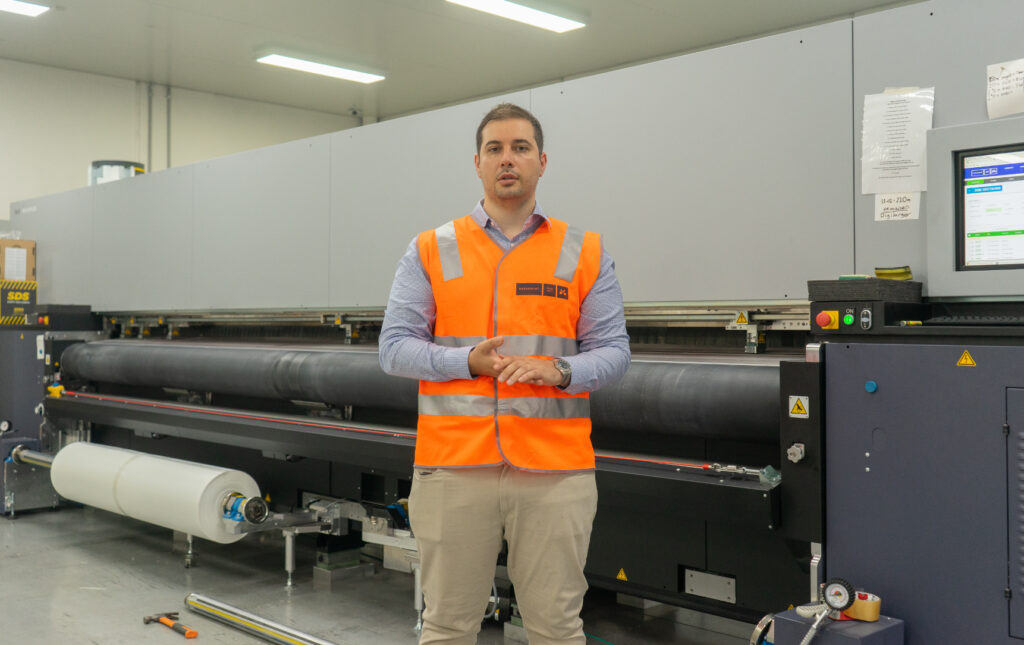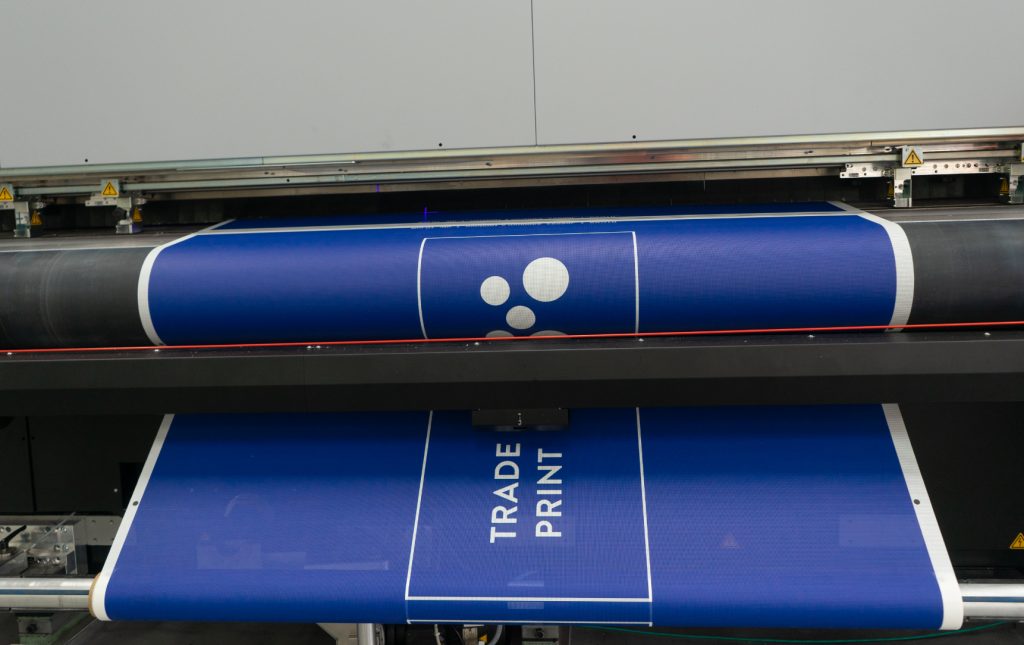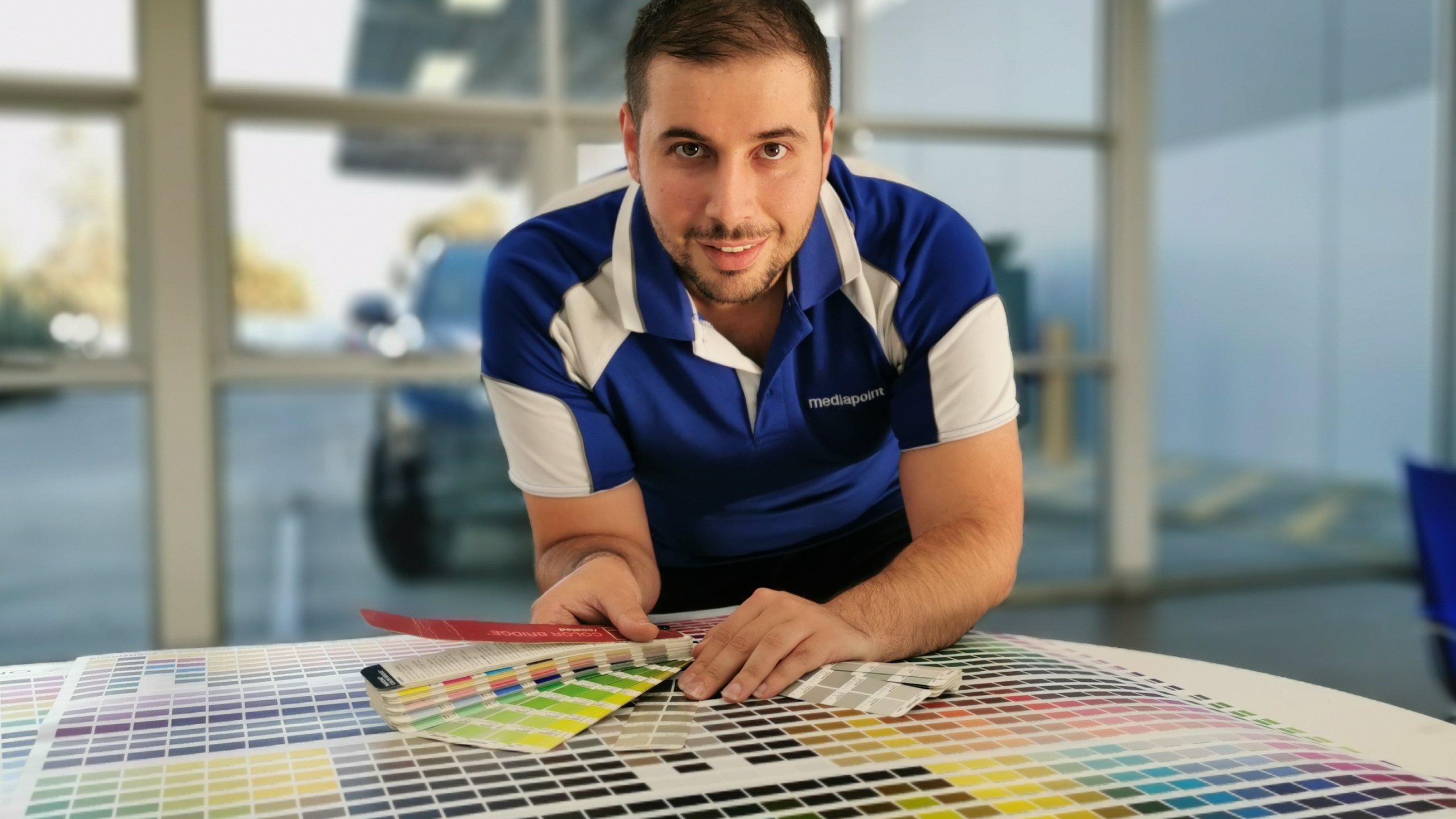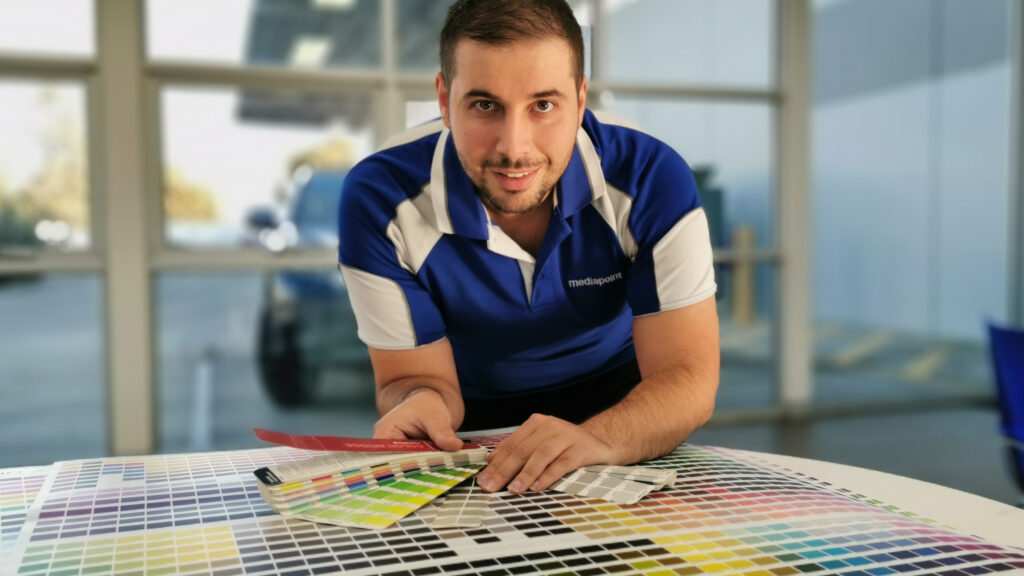In this article we discuss the best practices for optimal large format printing in this video and accompanying article.
Many of our customers have prior experience with differing forms of printing – offset, small format, merchandising, and screen printing. Large format printing, however, has its own nuances. So getting across these best practices can help you expedite printing, save headaches, and achieve better printing results.
Convert Fonts In Your Large Format Printing Artwork to Outlines
Fonts, like colours, are a particularly tricky element of printing artwork. There are legal / technical limitations when it comes to fonts. You can never be sure the printer will have the font you require available. So to mitigate any issues you should always convert your text elements to outlines. Without conversion it’s likely to be automatically substituted by graphic design software. This is particularly true of custom fonts or those in languages that do not use the English alphabet.
Converting fonts into outlines ensures that artwork will print as it is provided. Quite often we see text elements being the cause of delays to wide format printing. There are other processes that can help, like flattening of an image file but this create other issues.
Most trade printers will not undertake proofing – so double check your work before sending. Conducting conversion of text elements and following the other tips below will set you up for success. If you want to better understand what is required by your trade printer, and find the right match, we recently discussed the fundamental questions to ask.
Use CMYK & Pantone For Accurate Colour Matching
Always setup your artwork files in CMYK and not RGB. Whilst RGB is the go-to for digital design, the finished, printed colours won’t match. Trust us – there is quite the difference in colour between an RGB specification and the CMYK print output.
If you’re after a very specific colour match you’ll want to go a step further. Specify a Pantone C colour to correctly match and achieve your desired output. As colours can change from inkset to inkset, Pantone C colouring specifications keep wide format printing profiles in check.
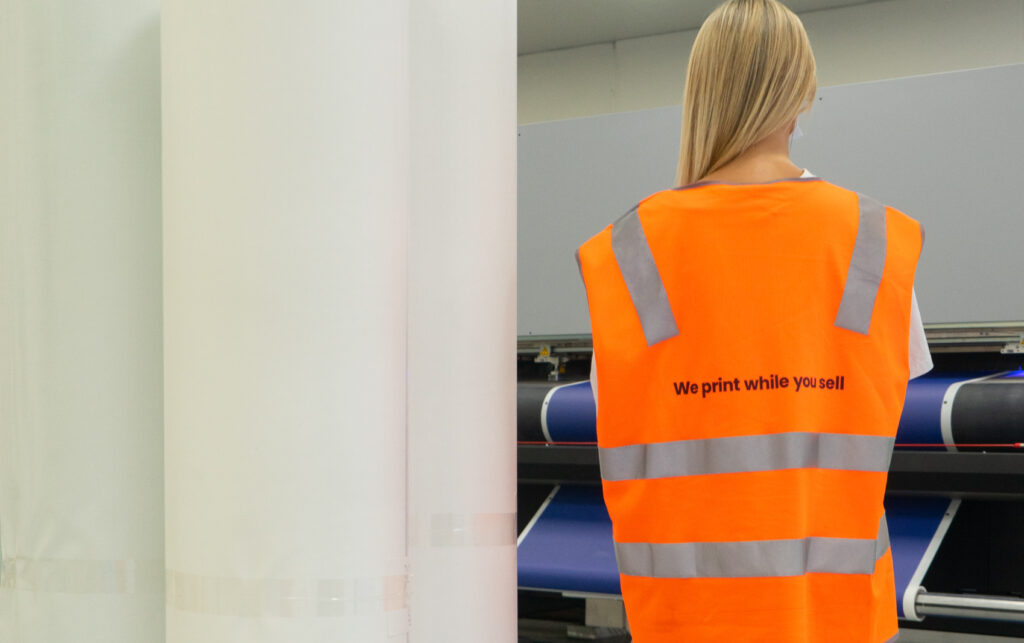
Aim For 120DPI in Any Photos
Keep to the golden number of 120DPI photos to be printed in a large format. Any lower than this and it’s highly likely pixelation will occur. If you go too high you run the risk of RIP (Raster Image Processing) issues due to massive file sizes.
There really is no need to overdo it on the DPI. Don’t forget: most large format printing is designed to be viewed from a few meters back. You’ll find that there is a larger dot size (compared to small format printing) due to the outdoor durability requirement of the ink. So when it comes to the finished product, whilst it may look odd up close, you’ll get an accurate representation of the image when viewed from the intended distance.
Another thing to keep in mind here is the file size compared to its final scale. If the file is at 10% size, then set your DPI to match so that once blown up the image appears as intended.
For example:
If you’re delivering banner files at 10% size, set them up at 1200DPI. Once blown up to 100% size you’ll be right on that ideal 120DPI mark.
Utilise Vectors For Wide Format Printing
Use vectors wherever possible for any wide format printing. Vectors are incredibly handy for this typoe of printing. Vectors utilise mathematical formulas to create the shapes that make up your image. So no matter how large the artwork needs to be, the image will remain sharp. Industry standard graphic design software will be able to look after the technical side of things for you.
Trade printers recommend vectors due to their better sharpness when compared to rasters. With rasters, there is always a point where the images will pixelate. Rasters are essentially a photo – so they cannot scale infinitely. In wide format printing this ability to scale eliminates the possibility of any pixelation or blurring.
Plus vector images contain the CMYK values. Which takes care of the best practices above and leads to more accurate colour in the finished print.
If you’re a print reseller and outsourcing (or looking to outsource) over 30 jobs a month, we can help. Mediapoint has over 16 years of experience servicing high volume resellers exclusively. Talk to us today.

